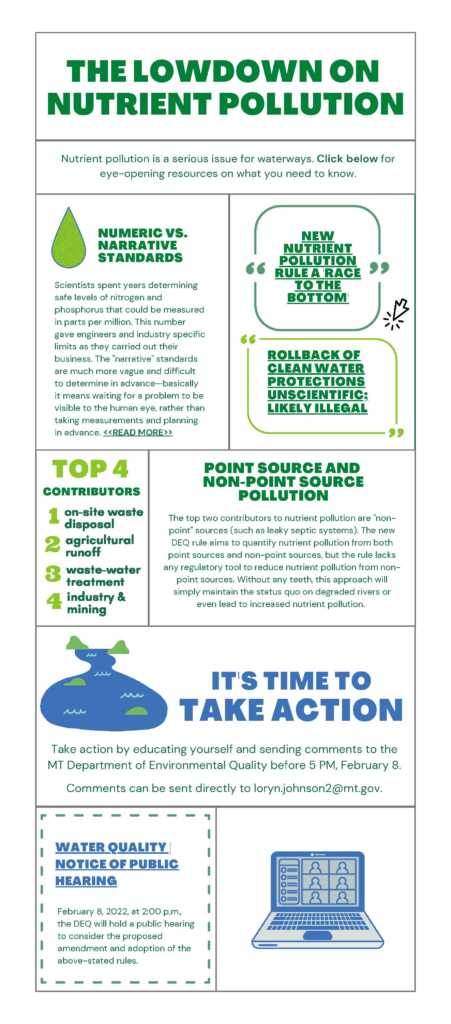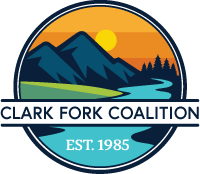Keep Our Rivers Clean, Not Green
February 7, 2022

Nutrient Pollution in Waterways Set to Worsen

You might remember that around this time last year we asked for your help in fighting legislation that would abandon longstanding science-based and data-driven methods of preventing nutrient pollution in Montana’s waters. (Healthy as it sounds, “nutrient pollution” is the source of that nasty green river slime we all hate.)
Unfortunately we lost that battle. And now, as directed by that ill-advised legislation, the MT Department of Environmental Quality (DEQ) is drafting new standards based on qualitative descriptions of nutrient pollution levels (narrative standards), rather than measurements of pollution (numeric standards). These narrative standards would be far less protective of our waters. That’s the bad news. The good news is: right now you can weigh in to stop this dangerous backsliding on water protection.
Email comments directly to the DEQ:
Sample email language:
To Whom It Concerns,
Montanans oppose any rule that does not hold polluters accountable or protect our water quality. We ask that DEQ’s new nutrient rule retain science-based numeric standards, address nitrogen as well as phosphorus levels, and include regulatory tools to enforce the reduction of non-point source pollution as well as point source pollution. DEQ rules must proactively address pollution, not wait to react to problems when it’s too late.
- The proposed definition of Adaptive Management Plan sets out to achieve narrative nutrient standards rather than numeric standards. This is a transition that the public did not ask for. Narrative standards will not protect or benefit the public or our publicly owned water resources. The DEQ should abandon this approach and return to numeric standards.
- The proposed rule inexplicably prioritizes the reduction of one source of nutrient pollution (phosphorus) over another (nitrogen). There is no scientific basis for this approach. It will undoubtedly result in increased degradation of waterways, while letting certain pollution sources off the hook.
- Although the rule aims to quantify nutrient pollution from both point sources and non-point sources, the rule lacks any regulatory tool to reduce nutrient pollution from non-point sources (such as leaky septic systems). Without any teeth, this approach will simply maintain the status quo on degraded rivers or even lead to increased nutrient pollution.
- As written, the rule only requires an “implementation plan” (i.e. an “action” plan) to address nutrient pollution where narrative standards are not being met and beneficial uses are not being protected. This reactive approach will do nothing to address nutrient pollution problems until it’s too late.
Montanans have worked for decades to improve water quality in our state. Those efforts have paid off. We invest millions annually to prevent nutrient pollution and mitigate for natural and human-caused nutrients that do make their way into rivers. It’s not perfect, but without those efforts things would be much worse.
With rapid development, warming temperatures, and more at stake than ever before for our rivers and groundwater, we need stronger, not weaker water protections. The standards DEQ is considering right now would have long-lasting negative impacts on Montana’s water resources. We can’t let that happen.
Montana’s waterways need your help today. Thank you!
